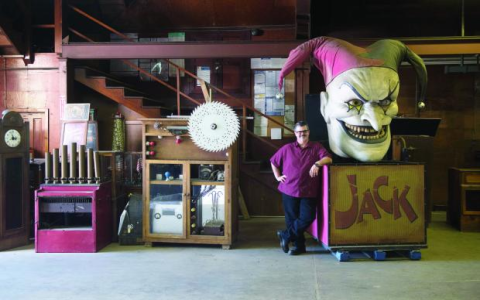Getting Started with this “Burns Auction” Thing
So, this whole “burns auction” idea, right? It wasn’t something I read in a textbook, that’s for sure. I was just fiddling around with some small-time crypto project a while back, you know, trying to get my head around how these digital tokens actually work beyond just clicking ‘buy’ and ‘sell’ like on the stock market. A buddy of mine, always digging up the weirdest stuff from the corners of the internet, dropped this “burns auction” term he’d seen on some obscure online forum. Sounded a bit over the top, didn’t it? “Burns” auction. Like, are we literally setting the bids on fire?

Figuring Out What It Even Meant
My first thought was, “What in the world is that?” So, I did what everyone does: I tried looking it up online. Found a whole lot of nothing, or at least nothing that made much sense. Just bits and pieces here and there. Some folks were talking about burning tokens as part of a bid, others about some kind of auction designed to reduce supply. It was all pretty fuzzy. So, I figured, “Okay, if the internet can’t give me a straight answer, I’ll just try to piece together my own version from the clues I found.” The main idea I got stuck on was that whatever you bid, a chunk of it, or maybe even all of it, gets “burned” – basically, taken out of circulation for good. Seemed like a pretty wild way to run an auction, but then again, that whole crypto space is full of wild ideas.
My Little Experiment: Setting Up the “Auction”
I decided to put together a really simple test. Nothing fancy, no complicated coding at first, just a sort of thought experiment that I then tried to mimic with some basic scripts I already had. My main aim wasn’t to sell some priceless artifact, just to watch how the mechanics of such an auction would actually unfold.
Here’s the set of rules I came up with for my very own “burns auction”:
- People would bid on a digital doodle I made. Seriously, it probably took me five minutes to draw.
- They’d place their bids using some test tokens I whipped up – completely worthless, of course, just for the experiment.
- And here was the main twist: every single bid submitted would be burned. Not just the bids from the losers, or a percentage of the winning bid. Everything.
- The person who bid the highest would get the doodle, but their bid, along with everyone else’s, would just vanish into thin air.
Yeah, I know, I know, it sounds like a terrible deal for anyone bidding. But I was genuinely curious about the group behavior and the token effects, if you can even call it that at such a tiny, homemade scale.
Hitting a Few Snags (Well, More Than a Few)
First off, just trying to explain this setup to the couple of friends I managed to drag into testing it was a real headache. “So, let me get this straight. I give you my tokens, they disappear forever, and I might get a doodle?” Yep, that was pretty much the gist. They definitely thought I was losing it.

Then, there was the challenge of actually simulating the “burn” part. If these were real tokens on a proper blockchain, burning usually means sending them to an address nobody can access or using a special function in a smart contract. For my little script, it basically just meant deleting lines from a list. But I really wanted to make sure it felt transparent, that people could somehow see their bids were “gone.” I ended up making a little shared spreadsheet, super basic and clunky, to track bids and then dramatically deleting them. Real cutting-edge technology, you know.
The biggest hurdle, honestly, was wondering if this whole model even made any sense. Why would anyone in their right mind bid if their entire bid amount is destroyed, even if they win? It felt like a system that was designed to either fail spectacularly or just rapidly drain all the tokens out of existence. I almost threw in the towel, thinking this “burns auction” was just a fancy name for a completely broken idea someone dreamed up.
Pushing Through and What Happened
But, I’m stubborn, so I stuck with it for a little while. I officially ran my “auction” for the amazing five-minute doodle. I got a flood of joke bids at first, as you’d expect. Then, surprisingly, one friend actually put in a slightly serious bid. Then another friend topped it, just by a bit. It was a strange experience to watch. Because the item itself was practically worthless, it became more about the weirdness of the bidding process and watching these imaginary tokens “burn.”
The outcome was… pretty interesting, actually. The doodle “sold,” meaning someone did make the highest bid. A whole bunch of my test tokens were “burned” as per the rules. The winner got their digital doodle. Everyone else, well, they got nothing and lost their bids. From a normal economic standpoint, it was completely bizarre.
What I started to realize was that the “value” in this kind of setup wasn’t necessarily in the item being auctioned, or even in “winning” in the traditional sense, especially if your winning bid is gone forever. If the tokens themselves had some kind of perceived value (even my fake ones, in our little game), and if the act of burning them made the remaining tokens scarcer, then maybe, just maybe, there was a weird kind of incentive hiding in there. Like, the bidders are sort of contributing to making all the remaining tokens more valuable, which could theoretically benefit everyone who still holds those tokens, including themselves (if they had more stashed away). It’s a bit of a mental leap, especially for my silly doodle, but it definitely got me thinking.

It wasn’t some earth-shattering discovery, and I’m certainly not about to go out and launch the next big auction platform based on this. But just going through the motions of setting up this “burns auction,” even in such a ridiculously simplified way, taught me a heck of a lot about questioning the usual ways of doing things. Just because an auction system sounds odd or goes against common sense doesn’t mean there isn’t some strange logic or a very specific niche where it might actually work, especially in these new digital worlds where all the rules are still being made up as we go along. It was a fun little detour from my usual coding tasks, that’s for sure. Made me appreciate just how many different ways there are to think about “value” and “exchange.”




